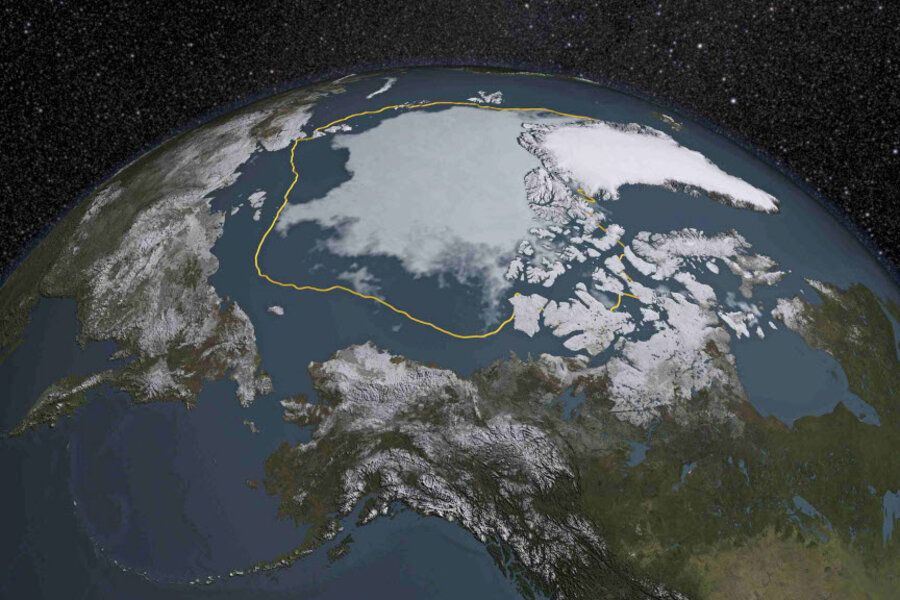Has Arctic ice loss reached a tipping point?
Loading...
Faint hopes for recovery in the Arctic are crushed his month after sea ice shrank to its fourth lowest level on record, federal scientists said.
After hitting its summer minimum last week, the Arctic had 1.7 million square miles of sea ice, down 240,000 square miles from 2014. This difference is the size of California, New York, and Maryland combined.
The winter maximum extent of sea ice has also decreased in the Arctic, reported The Christian Science Monitor. This past winter, the maximum extent of ice was reached earlier than expected, on Feb. 25, 15 days earlier than the March 12 average that scientists recorded between 1981 to 2010.
The amount of summer minimum sea ice has varied since satellites started measuring in 1979. It hit an all-time low of 1.3 million square miles in 2012, and went back up to 1.95 square miles in 2013.
But even though average sea ice levels shift from year to year, data center scientist Julienne Stroeve says we are seeing a long-term trend.
"The ice is decreasing over time, which you would expect because the Arctic is warming," Dr. Stroeve told the Associated Press
NASA scientists say we are continuing a long-term trend of about 12 percent Arctic sea ice loss per decade since the late 1970s – a decline that accelerated after 2007, the Monitor reported last month.
Using computer stimulations of human-caused warming, Stoeve predicts that sea ice will completely disappear from the Arctic during summer months by 2040.
This means that we are beyond recovery in the Arctic, says Pennsylvania State University climate scientists Michael Mann.
"We remain on a trajectory that is actually ahead of model predictions," Professor Mann said. "Arctic sea ice is one of several aspects of climate change that his happening even faster than originally predicted."
According to NASA and the National Oceanic and Atmospheric Administration, the world overall this year is by far the hottest it has been in the past century.
This report contains material from the Associated Press.







